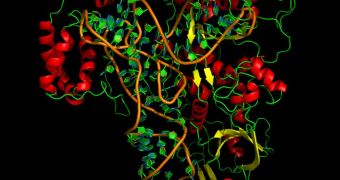Officials with the US National Science Foundation (NSF) have announced that the University at Buffalo (UB) will host a new Science and Technology Center (STC), the only such center that the NSF currently operates in the mid-Atlantic region. The Center for Biology with X-ray Laser, or BioXFEL, will conduct advanced biological research.
The STC is the product of cooperation between a consortium of eight universities and institutes in the United States, all coordinated and funded by the NSF through a $25 million (€18.5 million) grant to UB and The State University of New York (SUNY).
According to NSF Office of International and Integrative Activities senior staff associate Dragana Brazkovic, the new center will most likely lead to significant innovation in the field of characterizing biological structures using advanced imaging techniques.
The plan is to turn BioXFEL into a leader in the field of advanced X-ray bioimaging techniques. This will be achieved through extensive use of such technologies, as well as through developing new proprietary technique for viewing proteins, molecules and other structures.
Primarily, the new STC will focus on analyzing molecular targets that should come in handy for developing new drugs against a wide array of diseases. Experts at the center will have access to serial femtosecond crystallography (SFC) machines, which perform an innovative type of X-ray crystallography.
This imaging technique is renowned for producing extremely detailed atomic-scale models of molecules, which microbiologists can then use to figure out how certain proteins function when disease occurs. The SFC machines will run on a new X-ray, free-electron laser (XFEL).
The instrument was developed by experts with Stanford University's SLAC National Accelerator Laboratory. In 2012, the use of XFEL in protein crystal analysis was hailed as one of the year's most significant breakthroughs by the esteemed journal Science.
“At the heart of this center is XFEL technology that produces radiation with laser-like properties at X-ray wavelengths,” says David Rockcliffe, who is the manager of the Chemistry of Life Processes program at NSF.
“With this, the center will provide the biology research community with tools to study an enormous number of biological systems that are currently inaccessible by current X-ray methods,” the expert concludes.

 14 DAY TRIAL //
14 DAY TRIAL //